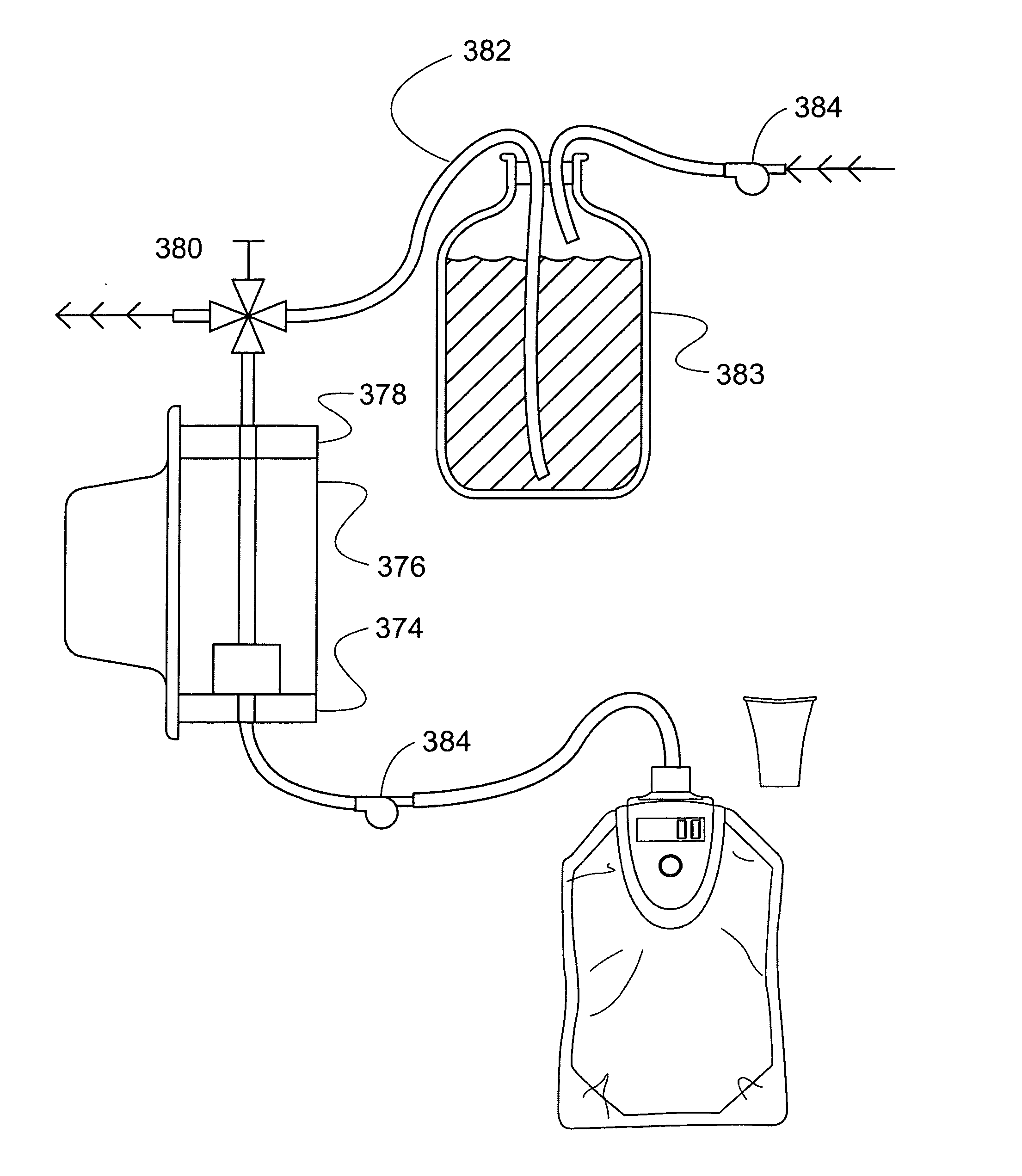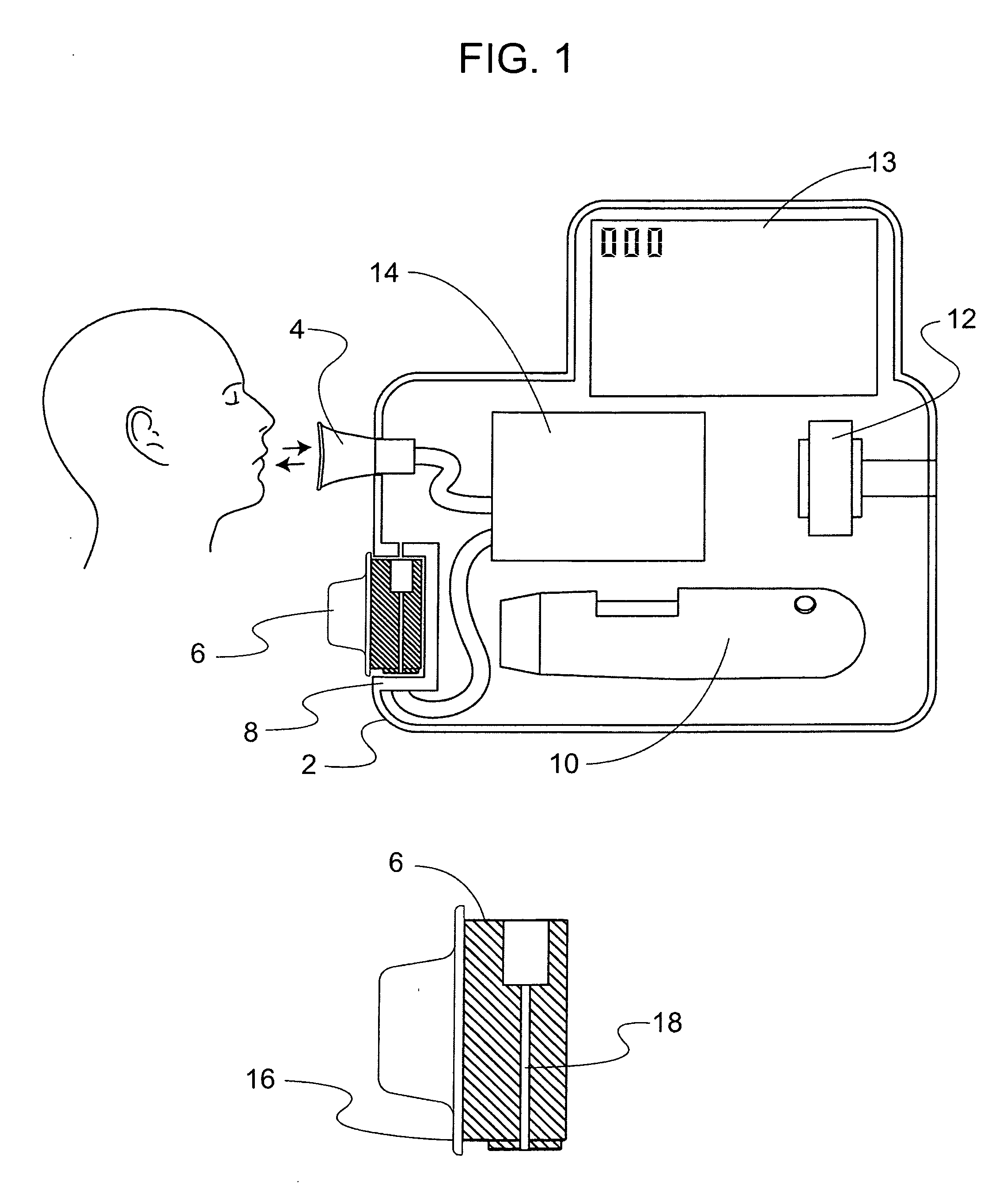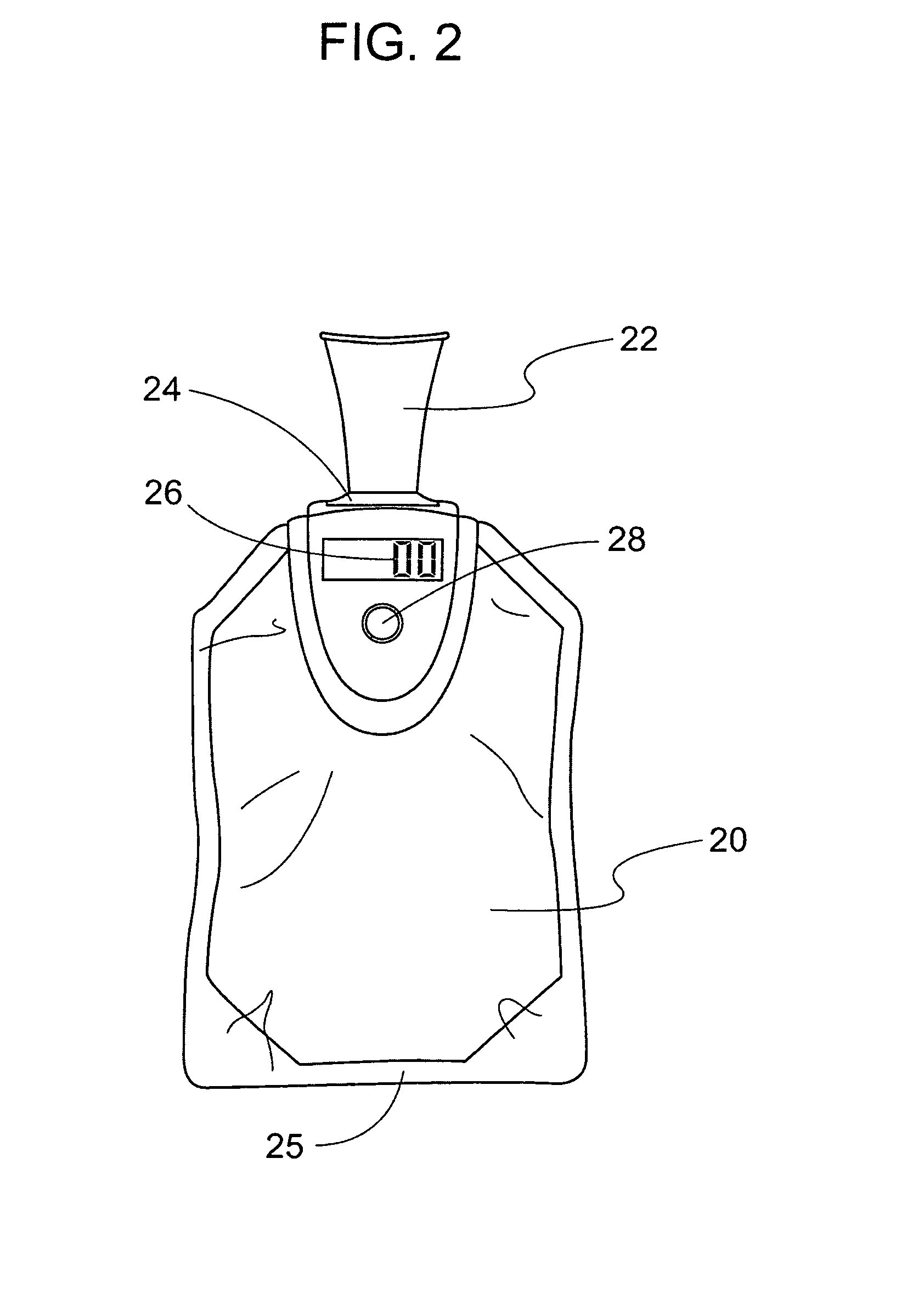Method and apparatus for analyzing acetone in breath
a technology of acetone and breath, applied in the field of methods, apparatus and technology for analyzing acetone in the breath, can solve the problems of patients suffering, permanent injury or death, body beginning to metabolize fats or fatty acids, etc., and achieve the effect of facilitating a change in optical characteristics
- Summary
- Abstract
- Description
- Claims
- Application Information
AI Technical Summary
Benefits of technology
Problems solved by technology
Method used
Image
Examples
example 1
[0194]APTES beads were made by adding 0.5 grams (“g”) of 130 to 140 mesh silica gel to 200 microliters (“uL”) of APTES in 800 uL of propanol and drying at 80° C. Following drying, the APTES beads were cured at 110° C. for one hour (“hr”). This was done to create the “first” surface.
[0195]DEAPMOS beads were made by adding 0.25 g of 130 to 140 mesh silica gel to 100 uL of DEAPMOS and 400 uL of propanol and drying as described above. Following drying, 0.25 g of the beads were added to 0.75 mL of 1 normal (“N”) sulfuric acid (H2SO4) and 0.25 milliliters (“mL”) of diH2O and incubated for 10 minutes (“min.”) while rocking. 0.1 g of sodium nitroprusside (“SNP”) and 0.04 g of magnesium sulfate (MgSO4) were dissolved in the mixture, and then the beads were vacuum filtered and dried at 110° C. for 20 min. 0.25 g of the DEAPMOS / SNP beads were then mixed with 0.5 g of APTES beads and packaged into separate aliqouts. This was done to create the “second” surface.
[0196]The beads were packed into a...
example 2
[0217]APTES beads were made by adding 0.5 g 130 to 140 mesh silica gel to 200 uL APTES in 800 uL Propanol and drying at 80C. Following drying, the APTES beads were cured at 110° C. for 1 hr. 0.5 g of APTES beads were added to 0.4 mL 1 N H2SO4 and 0.6 mL propanol and dried at 110° C. for 30 min.
[0218]Plain silica SNP beads were made by adding 0.3 g 130 to 140 mesh silica to 500 uL diH2O with 0.075 g SNP and 0.03 g MgSO4. Beads were dried at 110° C. for about 45 min. Plain silica SNP beads were mixed with APTES beads in a 1:2 ration and divided into aliquots
[0219]Beads were packed into a ⅛″ inside diameter column that was 0.3″ long. 0.5 ppm acetone in dry N2 was passed across the beads at 200 mL / min for 3 min. Then 90 uL of developer solution (25% dimethylsulfoxide, 75% methanol) was added to the beads and allowed to incubate for 3 min prior to imaging. A short, but easily visible, color bar was present after only 30 seconds.
[0220]A neutral or “plain” surface does not have nucleophile...
example 3
[0229]APTES beads were made by adding 0.5 g 130 to 140 mesh silica gel to 200 uL APTES and 400 uL propanol. The beads were vortexed thoroughly for 10 seconds. 0.4 mL 1 N H2SO4 was added and vortexed for 10 seconds. The beads were incubated at 80° C. for 10 min and then cured at 110° C. for 1 hr.
[0230]1.67%, 2.5%, 5%, 6.67% and 10% SNP solutions were made by dissolving SNP in 25% DMSO in methanol. Solutions were stored in light proof containers.
[0231]The beads were packed into a ⅛″ inside diameter Tygon tube that was 0.3″ long. 0.5 ppm acetone in dry N2 was passed across the beads at 200 mL / min for 3 min. Then 90 uL of SNP solution was added to the beads and allowed to incubate for 3 min prior to imaging. A dark and easily visible color bar was present. The kinetics of the reaction were faster for higher concentrations of SNP. 10% SNP formed a precipitate after several days at standard temperature. The 6.67% SNP solution was stable for more than two weeks at room temperature, in the ...
PUM
| Property | Measurement | Unit |
|---|---|---|
| pH | aaaaa | aaaaa |
| vapor pressure | aaaaa | aaaaa |
| flow rates | aaaaa | aaaaa |
Abstract
Description
Claims
Application Information
 Login to View More
Login to View More - R&D
- Intellectual Property
- Life Sciences
- Materials
- Tech Scout
- Unparalleled Data Quality
- Higher Quality Content
- 60% Fewer Hallucinations
Browse by: Latest US Patents, China's latest patents, Technical Efficacy Thesaurus, Application Domain, Technology Topic, Popular Technical Reports.
© 2025 PatSnap. All rights reserved.Legal|Privacy policy|Modern Slavery Act Transparency Statement|Sitemap|About US| Contact US: help@patsnap.com



